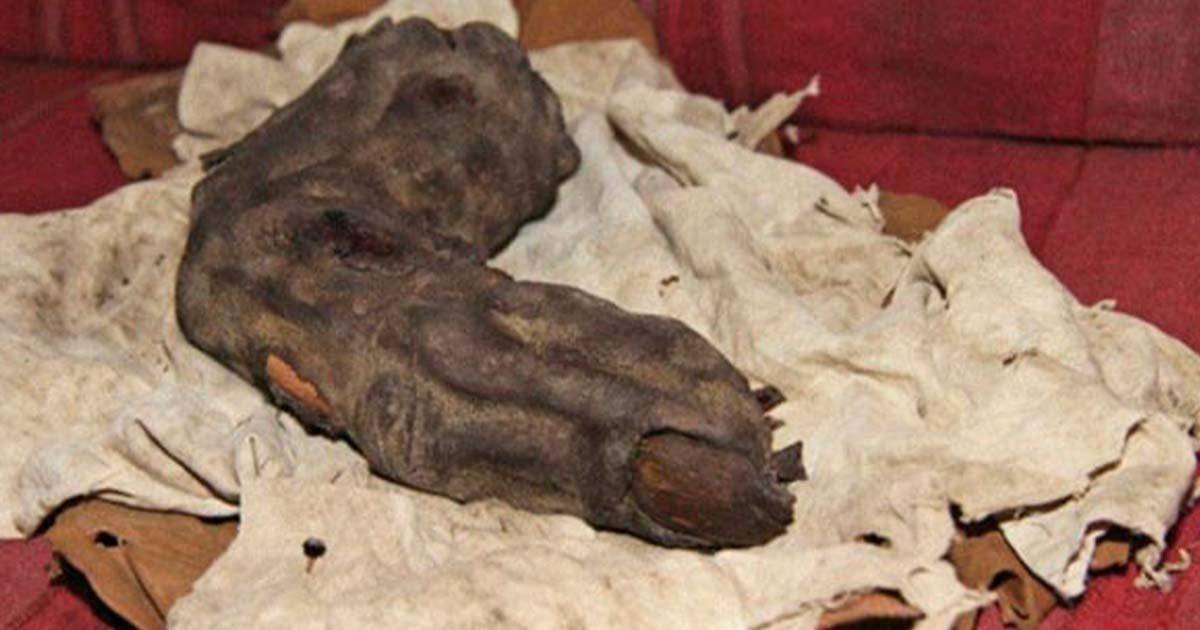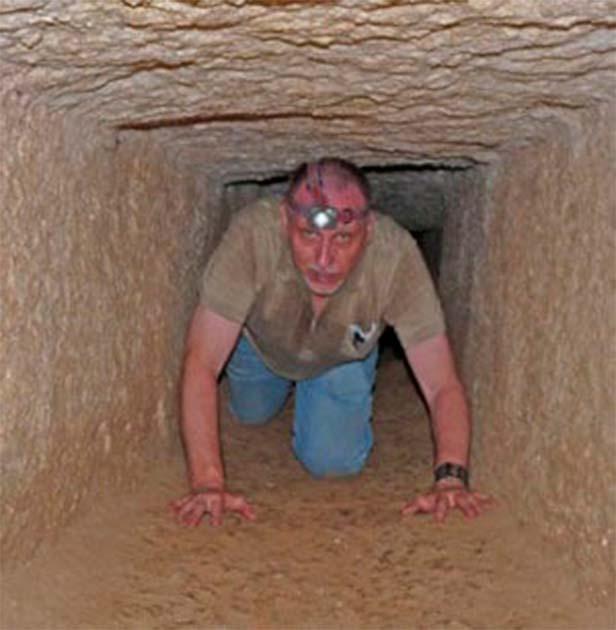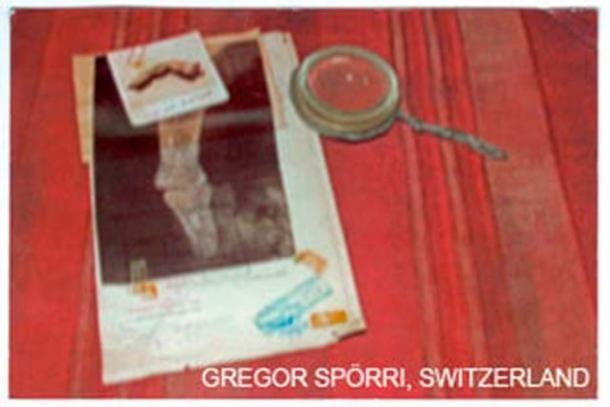The Bir Hooker relic, a 38-centimetre-long finger found in Egypt, is a giant mummified finger from Egypt. Some believe it is evidence of an ancient race of giants.
In April 1988, Swiss club owner Gregor Spörri travelled to Egypt armed with a number of books recommended by a friend to learn about ancient Egyptian culture. It was a trip that would change his life forever.

During this trip to Egypt, Spörri often found himself at the Great Pyramid, where he wanted to find out if there was any biocosmic energy inside. To achieve his goal, he crawled through shafts, bribed overseers, and spent endless hours in various sarcophagi waiting for evidence of an energy supply. In vain. Spörri believed that if you placed a bottle filled with water on top of the Great Pyramid it would explode due to cosmic energy. He performed the experiment but unfortunately nothing happened.

Swiss club owner Gregor Sporri travelled to Egypt armed with recommended books to delve deeper into the rich tapestry of ancient Egyptian culture. (Courtesy of ©Gregor Sporri)
Spörri’s trip was almost over when the bartender at the hotel where he was staying told him that he knew of an interesting excursion for him (the bartender had been observing him and noticed that he was interested in extraordinary cases). Spörri was curious and decided to go on the excursion. On the penultimate day of his vacation, early in the morning, a taxi picked him up to take him to his destination. The bartender showed the driver a crumpled note with the address and the trip began.
- Archaeologists horrified by discovery of mutilated mummy in Egypt (video)
- A digit of devotion: the finger of Buddha Bon
Nagib’s secret legacy: the unearthed relic of Bir Hooker
The journey was 2 hours to the district of Bir Hooker, a place close to the city of Sadat, located about 100 kilometers northwest of Cairo. They stopped at a farm where Spörri met an elderly farmer named Nagib. Nagib is a descendant of an ancient family of grave robbers. From a legacy from his ancestors, Nagib inherited two wooden boxes filled with valuables that provided him with a good income over the years. The stolen treasures were sold to Western tourists and the proceeds were used to buy land in Nagib. However, there was one item that he never sold and that had been in his family’s possession for 150 years. Only a few people had ever seen this object.
Nagib was in financial difficulties, so he proposed that Spörri could view this particular object, photograph it, and preserve it for a fee of $300. Spörri sat on a wooden bench while Nagib pulled out a wooden box and lifted the lid. As a musty smell rose into the air, he pulled out an elongated package, wrapped in a leather cloth with lace around it. Beneath the leather cloth, there were old rags wrapped around a strange-looking object. When Nagib unwrapped the package, an oblong, grayish-brown object emerged. He carefully placed the object in the hands of Spörri, who examined it with curiosity. Suddenly he realized that he was holding a gigantic mummified finger.

A Polaroid photograph of the finger and an X-ray taken in the 1960s (Courtesy of ©Gregor Sporri)
It was no ordinary finger, as it was at least 35 centimetres (13.77 in) long and about 6 centimetres (2.36 in) thick. Spörri examined the finger in detail and was able to determine that what he was holding was old, organic and humanoid. The finger seemed to have been cut off with anatomical precision and was crumbled in some places. The leathery skin was torn in places and was a few millimetres thick. Fungal remains could be seen between the dried folds and the nail was loose. The surface of the skin was damaged in some places, as if mice had bitten into it. The bone felt woody.
- Tales of a Two-Headed Giant: Are the Legends of Kap Dwa Real?
- The Bir Hooker Relic and the Giants of the Past – Part 2

More images of the finger, including an X-ray taken in the 1960s. (Courtesy of ©Gregor Sporri).
Spörri was stunned because the finger’s abnormal size would have meant that its owner must have been at least 5 or 6 metres (16.40 or 19.68 ft) tall. His scepticism led Nagib to show him another object contained in the wooden box: a leather folder containing several documents. Inside the folder was a certificate of authenticity, some papers with Arabic and Latin letters, a Polaroid photograph of the finger and an X-ray taken in the 1960s. The farmer’s son did some research through a friend at the hospital in Cairo. When Spörri compared the finger to the X-ray he could see that the proportions and shape were correct and that the X-ray was of the finger he was holding.






